I’m running out of steam for 2024. I tend to begin winding down for the year in November, when the darkness of Finnish winter creeps in. Every cell in my body wants to hibernate. Up until fairly recently I thought that I suffer from seasonal affective disorder, but it’s actually more complicated than that. The double-whammy of Christianity and capitalism has wiped out the long-standing tradition of rest in the darkest time of the year in Northern Europe, and about 20-30% of Finns are still not acclimated, myself included. ‘Tis the season to not be productive! It’s just in my nature.
This year I’ve held out longer than usual. But the last couple of weeks have been… tired. Enter Finnish sayings that I can only translate crudely and directly: “my coat is empty” (I’ve given it my all), “it’s as cold as in Russian hell” (it’s very cold), and my favorite, “as dark as inside the boogeyman's ass” (it’s very dark).
Yesterday was the shortest day of the year. Today the sun rises at 9.21 AM and sets at 3.16 PM in Helsinki, and when I write “sun”, I don’t mean the actual sun. It’s gray here. Nothing but gray and dark. But tomorrow will already be a minute longer than today.
Here are five things that have inspired me in this dark and rather depressing time.
Folk Costume book.
I bought a book about Finnish folk costumes at the Helsinki Book Fair earlier this fall. For some time now I’ve been curious about folk costumes in general, and of the Finnish ones in particular. Most clothing history sources focus on the fashions of the wealthy (survival bias is a real thing), but this book is about clothing that the common people wore in Finland before globalization.
While flipping through the book I’ve thought about the meaning of clothes as markers of geographic location, class and gender on the one hand, and the clothing-related culture we’ve lost as modern fashion has taken over the world, on the other. There’s a lot to unpack.
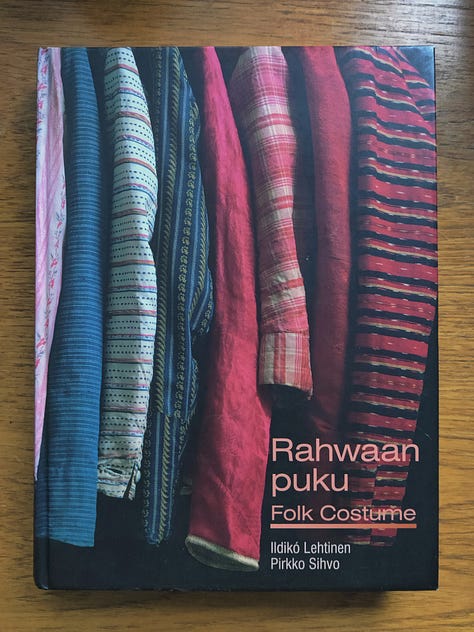
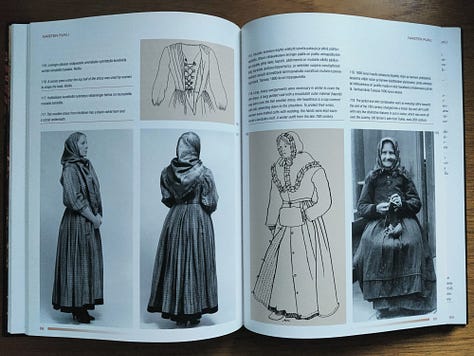
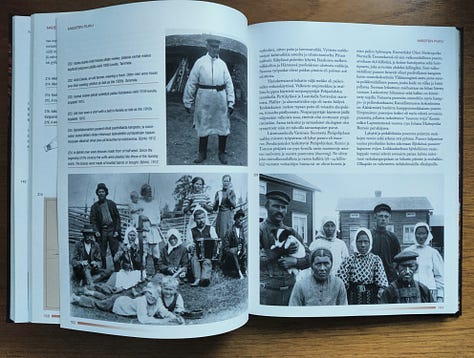
Virtual tours of the National History Museum of Finland.
Since the Folk Costume book was published in collaboration with the National History Museum, I’ve been dying to see what type of historical garments the museum might have on display. The museum itself has been closed for a huge renovation for quite some time, so for now I’ve had to settle for the virtual tours that the museum offers online.
The most striking item I’ve seen on the virtual tours is a skirt woven by the weaver Siina Rinne in 1900. She crochéd the hem of the skirt out of her own hair and it took 16 years to complete. The text on the skirt says, “The king and the beggar are equal in death.”
‘The Death of Personal Style’ by Mina Le.
I’ve been out of the fashion / style YouTube loop for quite some time, but I randomly ran into this excellent video essay by Mina Le. She discusses our quest for individuality and personal style, and why she has toned down her own dressing recently.
There’s a short clip in the video where journalist Lynn Yaeger responds to a question about the best advice she ever got, and she says: “it’s Sally Singer’s advice: if you’re interested in fashion, learn about everything else except fashion. […] Politics, art, painting, anything except fashion”. I’ve thought about that a lot.
I’ve had many style phases over the years, but the ones that seem to me the most authentic are the ones where I wasn’t so preoccupied with my own style. Not that I didn’t care about clothes or fashion, because I always have, but I was simply embracing and interpreting the world as a bigger whole, and style was just one small part of it. The more singular my hunt for personal style becomes, the more elusive it gets. I feel it’s time to loosen the reins even more.
Kibbe body types and Kitchener style essences.
Earlier this year there was a fascinating sub-thread about Kibbe body types in Irene Kim’s newsletter comments (I’m sorry I can’t link to the thread directly, I couldn’t find it again). I had never heard of Kibbe before, so I embarked on a mission to find out more about it.
I’ve always been interested in the various ways women have been told to dress over the years, but the Kibbe system from the 1980s, developed by stylist David Kibbe, seemed more complex than your traditional dress-for-your-body-shape advice, which typically aims at “balancing our proportions” by fading out what makes our bodies unique, hiding our so-called flaws, and telling us what not to wear.
Through researching Kibbe I ran into John Kitchener’s style essence theory, which is equally, if not more, intriguing. Both Kibbe and Kitchener categorize people on the yin/yang scale. Kibbe’s categories are based on people’s physical attributes (the body) and Kitchener’s on the way people are perceived by others (the vibe). Both theories encourage us to accentuate what makes us unique.
I wouldn’t advise anyone to obey any kind of style theory at face value, and there are all sorts of rigid interpretations of both Kibbe and Kitchener types out there, but I’ve found investigating the yin/yang style scale quite refreshing. I’m a total novice at all of this, but Kibbe and Kitchener have given me insight into why overly feminine clothing looks like a costume on me, or why I dislike athleisure so much.
‘Gothic Modern’.
Ateneum (Finnish National Gallery) is hosting a fascinating art exhibition that investigates the influence of European medieval and Northern renaissance art on 19th and 20th century modern art. ‘Gothic Modern’ tackles huge themes like religion, death, and sexuality, and it displays works by Arnold Böcklin, Lucas Cranach the Elder, Akseli Gallen-Kallela, Vincent van Gogh, Theodor Kittelsen, Käthe Kollwitz, Edvard Munch, Hugo Simberg, Helene Schjerfbeck, Marianne Stokes, and Gustave Van de Woestyne.
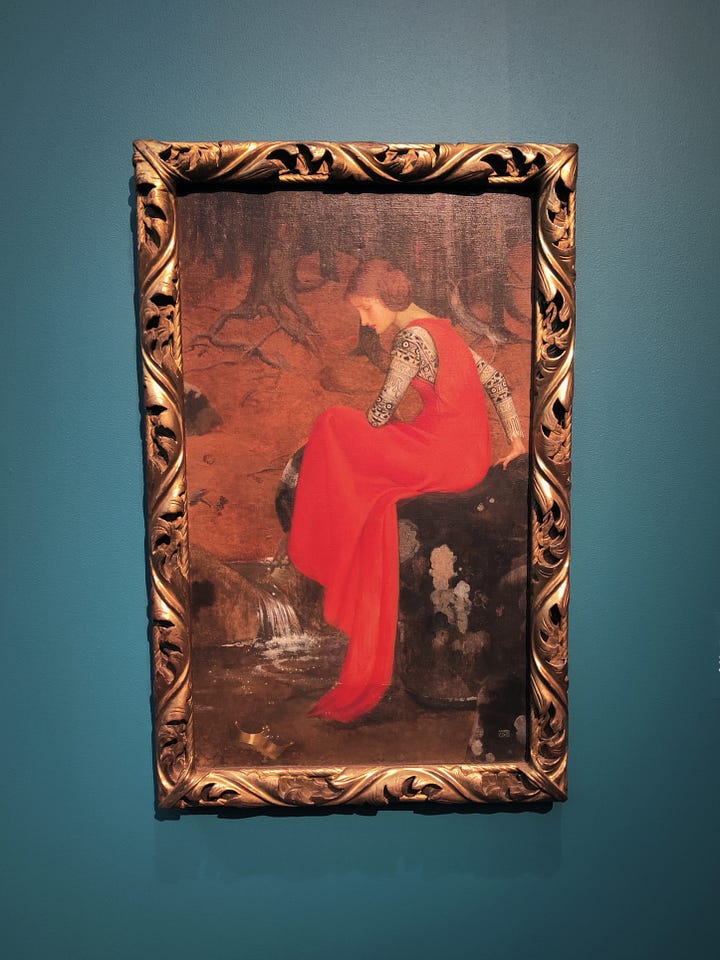

I visited the exhibition on Thursday evening this week, and I’ve never seen as many young people flock in a museum before. It seems that ‘Gothic Modern’ attracts Helsinki teenagers. Van Gogh’s smoking skeleton is cool and all, but younger people are probably also captivated by the deeper Gothic Modern themes. The exhibition notes draw apt comparisons between the types of societal changes that the modern artists were witnessing and what people are experiencing now in our post-modern time (alienation, climate change). The notion of order unraveling has always been a source of uneasiness, but within it there’s also a promise of something new, an opportunity for enlightenment. (Note to self: see more art.)
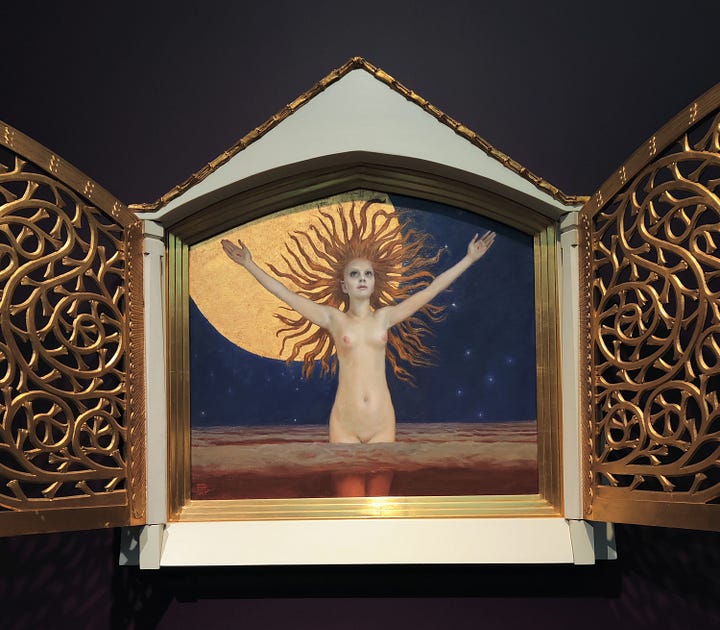

Gothic Modern runs in Ateneum until January 26, 2025, after which it travels to the National Museum in Oslo (February 28 to June 15, 2025), and then to Albertina Museum in Vienna (September 19, 2025 to January 11, 2026). Go see it if you have the chance!
That’s all, folks! It’s time to rest, and I want to wish my readers a happy holiday season. Thank you for being here, and I’ll see you next year!





Lovely newsletter for the Winter Solstice, thank you. Last year I decided to reframe my thinking about the shortest day of the year and actually try to embrace it. I started looking at it as a time to slow down, mend my clothes, deep clean my house and just generally take care of the things I already have in my life, including myself. I took it a step further this year and was actually able to take 16 days off from work, a first for me in the 20 years at my job. I used to get so caught up in the consumerism of Christmas and I when I look back, it was never actually fun. The frenzy, the multiple gatherings all squeezed into 2 days, bringing items into my home that were gifted to me (but not my style/redundant/didn’t align with my values) and feeling obligated to keep them because they were a gift from a loved one. It was absolutely exhausting, physically, emotionally and spiritually. We opted out when Covid hit and it became our new normal. And now I actually love this time of year. Yesterday I read a book (The Lost Art of Dress- thanks for the rec!), took in the waist of a skirt I thrifted many months ago, ate pasta and drank wine in the middle of the day, watched the live stream of the sunrise at StoneHenge, salt cured salmon for an upcoming meal and even did some detail cleaning in my kitchen. A very pleasant day indeed! I always look forward to reading your newsletter, I hope you get the rest you need and deserve. Also, love the Sally Singer quote. I think that will linger in my brain, probably forever.
The hair skirt is amazing! I wonder whether there was a matching hair shirt ;)
I received style/color analysis from John Kitchener when he was working in California. (He now lives and works in the Atlanta area.) I'd been researching a feature article about color theory and was prepared to be hugely skeptical, but John and the company he worked for, Personal Style Counselors, won me over. They went much deeper than "finding your colors" (they rejected the "seasons" metaphor), referring instead to nature and artworks to illustrate the concepts of color harmony. I'd never studied art history in any formal way, and the lessons were a revelation. I went on to take several advanced classes from PSC on color harmonies and style essences, all of them thoughtful, detailed, and valuable. I even came to look at art in a more educated way.